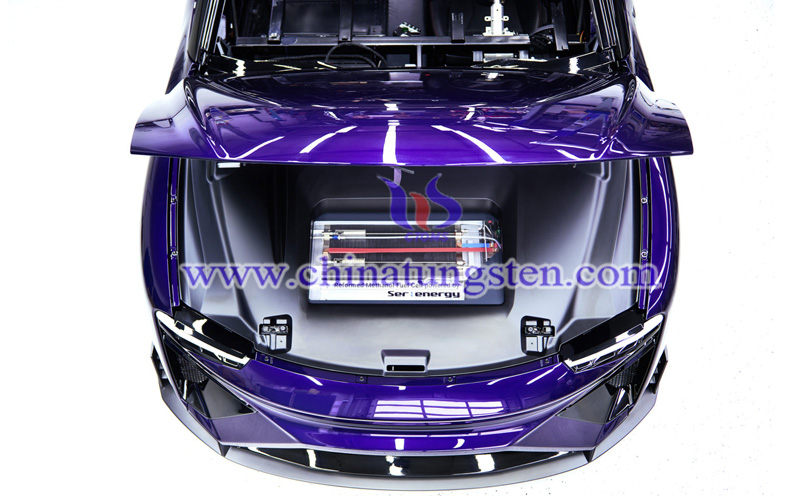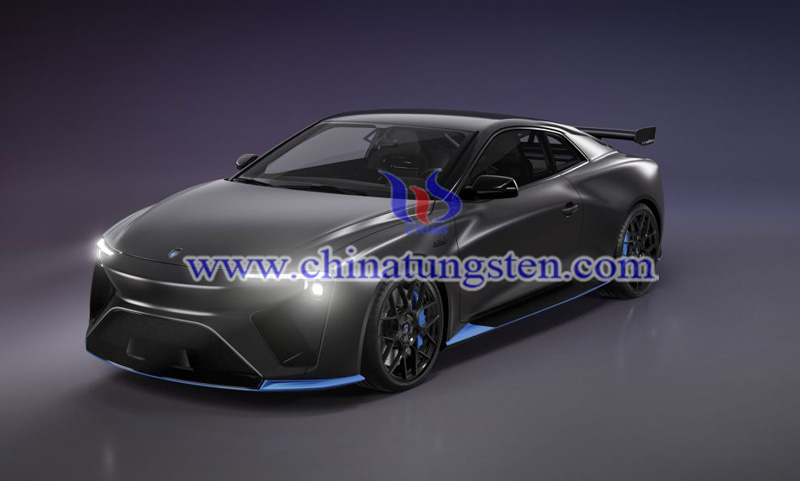Methanol Fuel Cell Supercar Launched, Longer Mileage Than Lithium Battery
- Details
- Category: Tungsten's News
- Published on Monday, 23 March 2020 19:11
Roland Gumpert launched the world's first methanol fuel cell vehicle (FCV) recently, with a longer mileage running than lithium battery. The fuel-cell supercar, Gumpert Nathalie, which owns far more battery life than current lithium battery electric vehicles (EVs), and achieves zero emissions.
A fuel cell vehicle (FCV) or fuel-cell electric vehicle (FCEV) is a type of electric vehicle which uses a fuel cell, instead of a battery, or in combination with a battery or supercapacitor, to power its on-board electric motor. Fuel cells in vehicles generate electricity to power the motor, generally using oxygen from the air and compressed hydrogen. Most fuel-cell vehicles are classified as zero-emissions vehicles that emit only water and heat. As compared with internal combustion vehicles, hydrogen vehicles centralize pollutants at the site of the hydrogen production, where hydrogen is typically derived from reformed natural gas. Transporting and storing hydrogen may also create pollutants.

According to an informed source, Nathalie fuel-cell supercar is equipped with a 5 kW methanol fuel cell, which can provide 15 kW of continuous power to a 400 kW (536 hp) electric engine, with a cruising range of over 500 miles (805 km), the "refueling" time is only 3 minutes, 0-100km in 2.5 seconds only, and the maximum speed can reach 300km/h, far exceeding the current lithium battery EVs. The model was originally planned to be displayed at the 2020 Geneva Motor Show, but due to the novel coronavirus epidemic, the display of this car would be delayed.
Methanol fuel cells belong to a class of proton-exchange membrane fuel cells, also known as polymer electrolyte membrane (PEM) fuel cells (PEMFCs), which are a type of fuel cell being developed mainly for transport applications, as well as for stationary fuel-cell applications and portable fuel-cell applications. Their distinguishing features include lower temperature/pressure ranges (50 to 100°C) and a special proton-conducting polymer electrolyte membrane. PEMFCs generate electricity and operate on the opposite principle to PEM electrolysis, which consumes electricity. They are a leading candidate to replace the aging alkaline fuel-cell technology, which was used in the Space Shuttle.

To improve the activity and chemical stability of methanol fuel cell catalysts, Gumpert is likely to use platinum and its-based nano-catalysts with different structures, such as hollow platinum-palladium alloys, platinum-nickel alloys, etc., but the preparation methods of these materials are relatively complicated.
Aside from this, some researchers have developed Pt/WO3/C catalysts, which could significantly extend the life of methanol fuel cells, as tungsten trioxide holds strong corrosion resistance, and the synergistic catalytic effect with Pt will improve the battery conversion rate.
- Tungsten Manufacturer & Supplier, Chinatungsten Online: www.chinatungsten.com
- Tungsten News & Prices of China Tungsten Industry Association: www.ctia.com.cn
- Molybdenum News & Price: news.molybdenum.com.cn
- Tel.: 86 592 5129696; Fax: 86 592 5129797; Email: sales@chinatungsten.com



 sales@chinatungsten.com
sales@chinatungsten.com